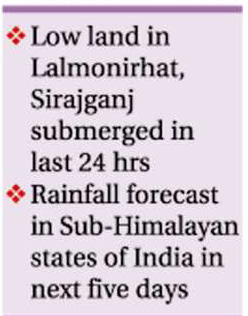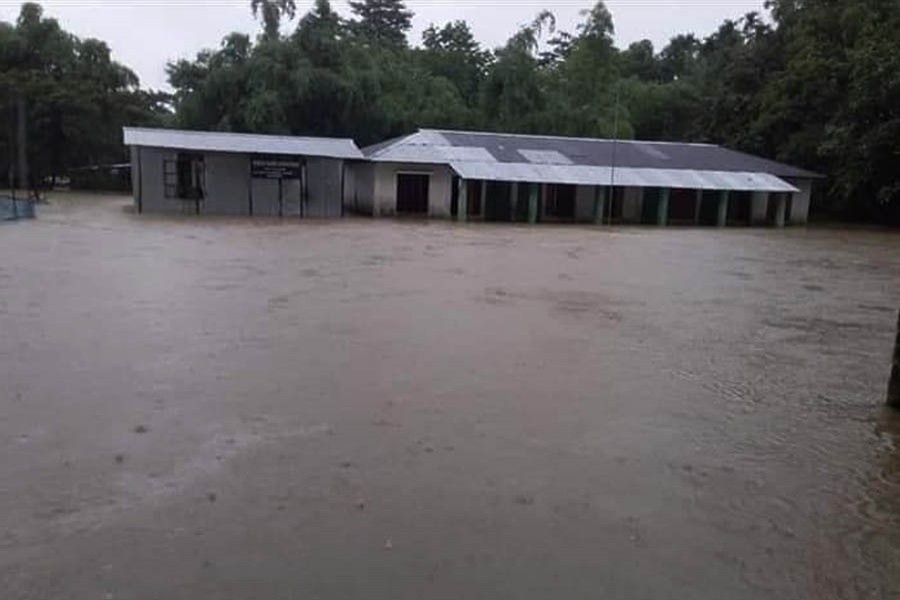Apart from the Haor, floodwater has also been creeping into the northern region as fresh areas with standing rice, onion and garlic were submerged in Lalmonirhat and Sirajganj districts in the last 24 hours, officials said.
Heavy rain in the Indian states of Meghalaya and Assam and the release of water from the Gojoldoba dam in the upstream cause inundation in low-lying areas of several northern districts.
However, flood conditions remain steady in the Haor region with slow rate of water receding amid poor navigation, said the officials.

A total of 6,827 hectares of standing Boro and onion land in five Haor districts and two northern districts, including Lalmonirhat and Sirajganj, have been inundated so far due to onrush of upstream water, according to the monitoring and evaluation unit of the Department of Agriculture Extension (DAE).
In Sirajganj, a total of 159 hectares of low land have been inundated due to rising water of the Jamuna while nearly 20 hectares of Char land have been submerged in Lalmonirhat as water flow rose notably in the Teesta.
Vast areas in Nilphamari's Dimla and Jaldhaka upazilas have also been inundated - but this is yet to be reported, said an official of DAE.
The condition in Kurigram is still good but further rain in the northern region and parts of Indian state of Assam might make it critical, said the official.
Md Mizanur Rahman, executive engineer of Bangladesh Water Development Board in Lalmonirhat, told the FE that water had started to rise suddenly from April 03 last.
He said gates of the Gojoldoba dam in the Teesta's upstream might have been opened amid heavy rain in the Indian state of West Bengal.
As a result, char land with rice, onion, watermelon, green chilli crops in Lalmonirhat and Nilphamari districts have been inundated due to the onrush of water from the upstream, Mr Rahman added
More than 1,050 millimetre of rainfall from April 2 to Apr 7 in the Indian state of Meghalaya caused the first flash flood in parts of the Haor region in Sunamganj, Netrakona, Kishoreganj, Sylhet and Brahmanbaria districts.
The onrush of water from upstream breached flood protection embankments at many places - first in Sunamganj and Netrakona, and later in Kishoreganj, Sylhet and Brahmanbaria, said DAE officials.
The flood water hit standing Boro fields of 6,650 hectares so far - of which, Sunamganj comprises 5,010 hectares.
A total of 0.45 million hectares of land have been brought under rice farming in this Boro season in nine districts under the Haor region.
The region contributes 10 per cent to the total rice production in Boro season.
Meanwhile, the Indian Meteorological Department forecasts fairly widespread rainfall likely to occur over Sub-Himalayan West Bengal-Sikkim, Arunachal Pradesh, Assam-Meghalaya and Nagaland, Manipur, Mizoram and Tripura in the next five days starting from the evening of April 10.
The Bangladesh Met Office also forecasts heavy rainfall in many places over Rangpur, Mymensingh and Sylhet divisions (the north and north-east) in the next 24 hours commencing from Sunday 6:00 pm.


